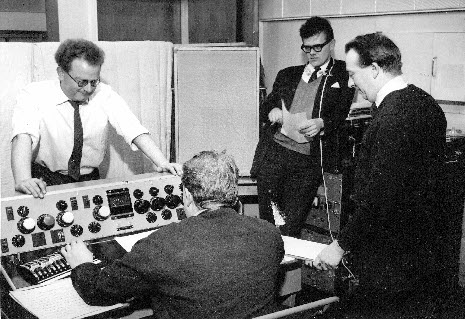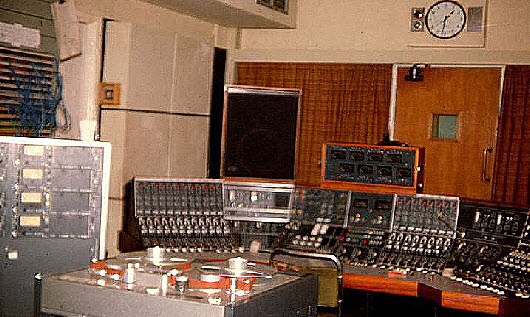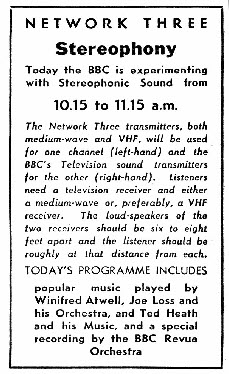In the late 1950s and 60s the BBC decided to broadcast some experimental stereo recordings from around the UK.
Most of the record companies were already producing stereo vinyls, and the BBC felt that even though the technology did not exist to broadcast stereo from all its Radio transmitters in the UK, it would be nice for its listeners to hear for themselves some of its excellent stereo recordings .
The means of achieving this was both novel and a little complex. Listeners were expected to hear the left channel from a Radio tuned to the Third programme, the right channel from a TV tuned to BBC 1. Depending on how matched these sources were, governed the overall stereo experience.
BBC Experimental transmissions started in 1958, and the picture above is of a recording session the Playhouse Manchester in 1964.
The recordings on the new NDO double album RUBY are from 1960/1961/1963. In the 60’s mixing desks suitable for broadcast stereo were rare, high quality tapes and stereo tape recorders even rarer. The recordings were made on a modified ( Stereo ) EMI TR 90.
Of interest is that to provide stereo echo, the gent’s loo was used as an echo room, occasionally providing plumbing noises that were not needed !
Note the quilting hung between the speakers to stop reflections, and improve stereo image.
At the forefront in the development of experimental stereo at the BBC was Dave Stripp and his engineering colleagues in London.
The only broadcast stereo equipment in the BBC would have been in Transcription Department. All this equipment would have been brought up from London,carried in and set up in the cubicle of the Playhouse as an outside broadcast, and the existing mono desk bypassed, or parts of it possibly used as a passive mixer.
The stereo recording team was supervised by Dave Stripp, and the sound mixing and assistance at the Playhouse was done by Manchester staff.
Photos M Stripp / Ron Southern E and OE

Experimental Stereo at the Playhouse Theatre, Hulme

Playhouse experimental stereo recording in 1964
Dave Stripp behind the desk
Dave Stripp behind the desk
Stereo desk in 1973, with 8 track recorder and LS 5/8’s for monitoring
